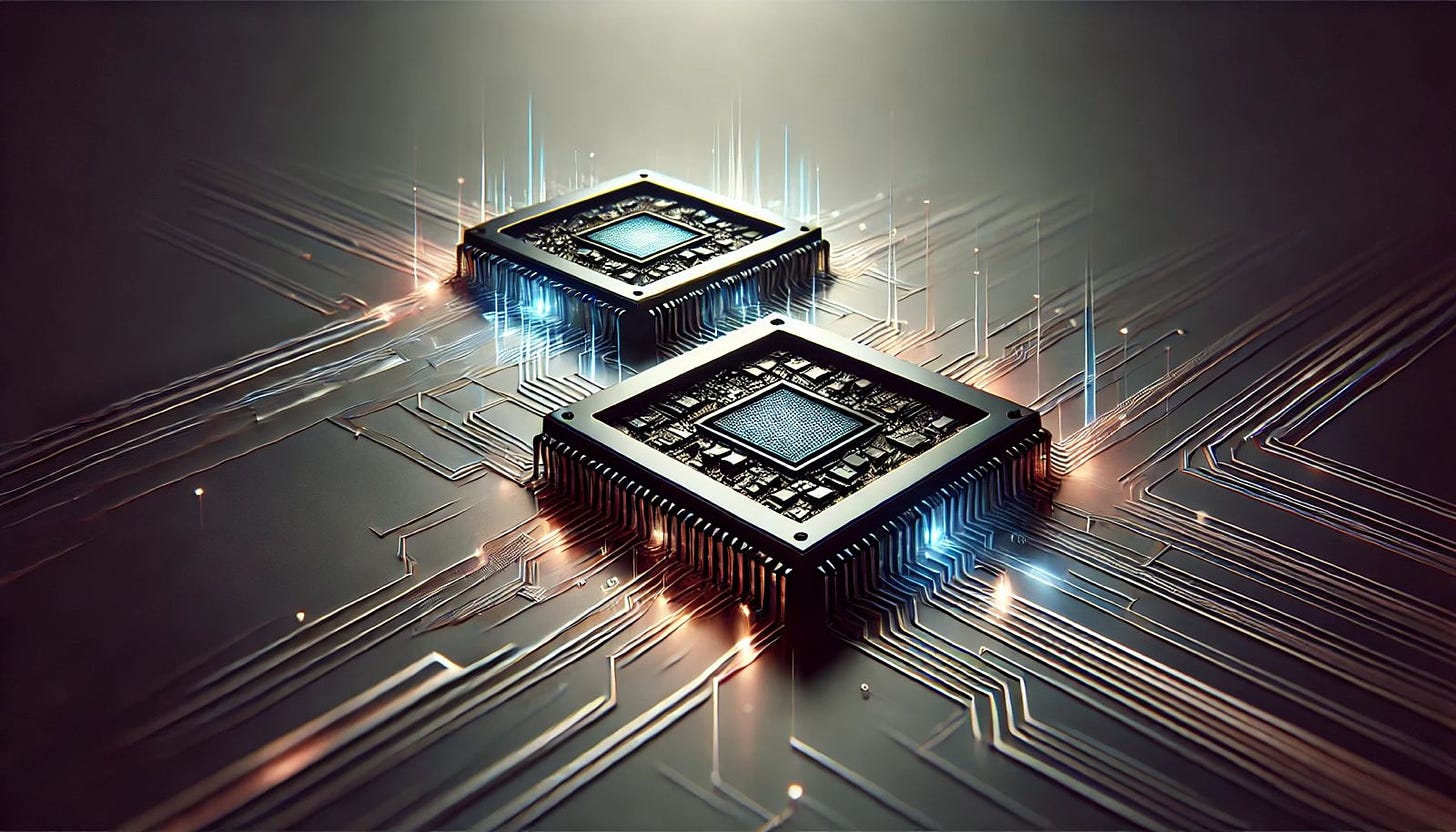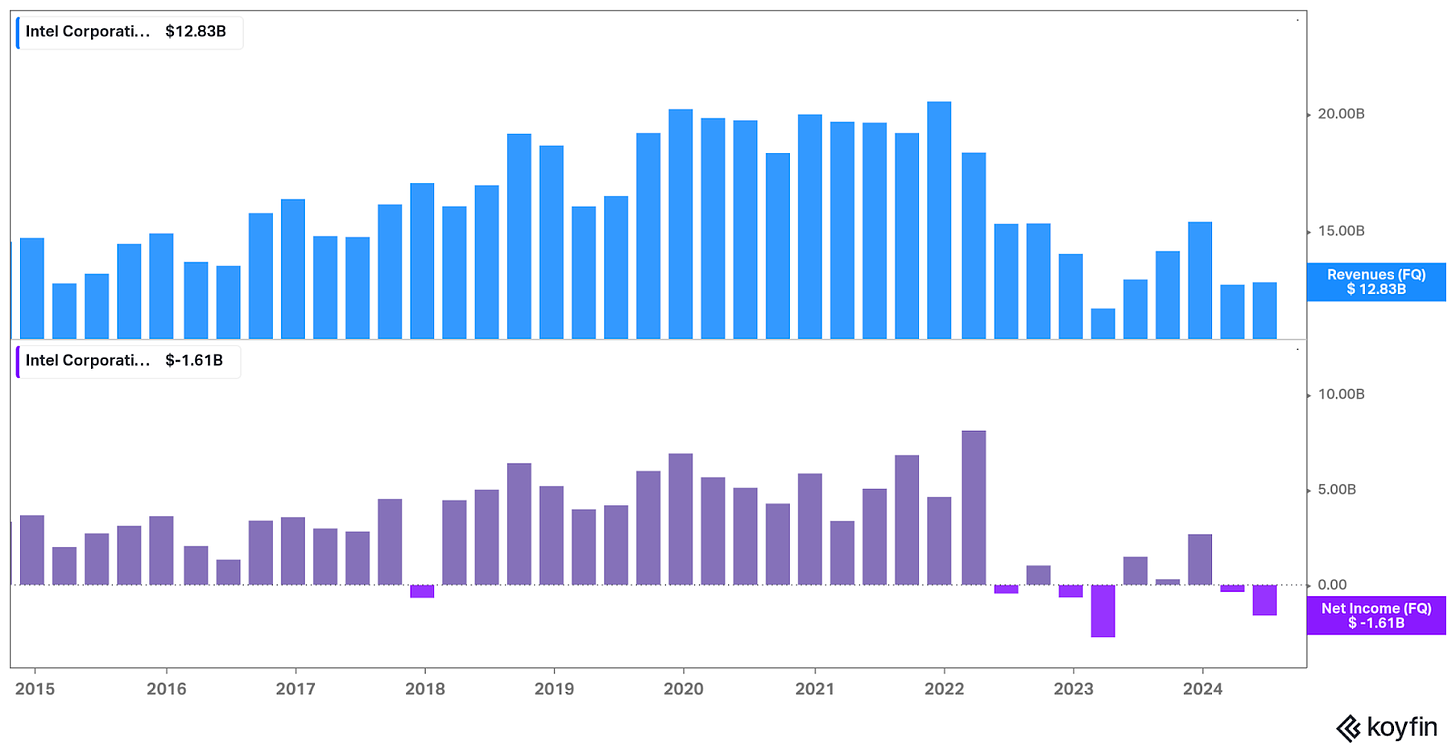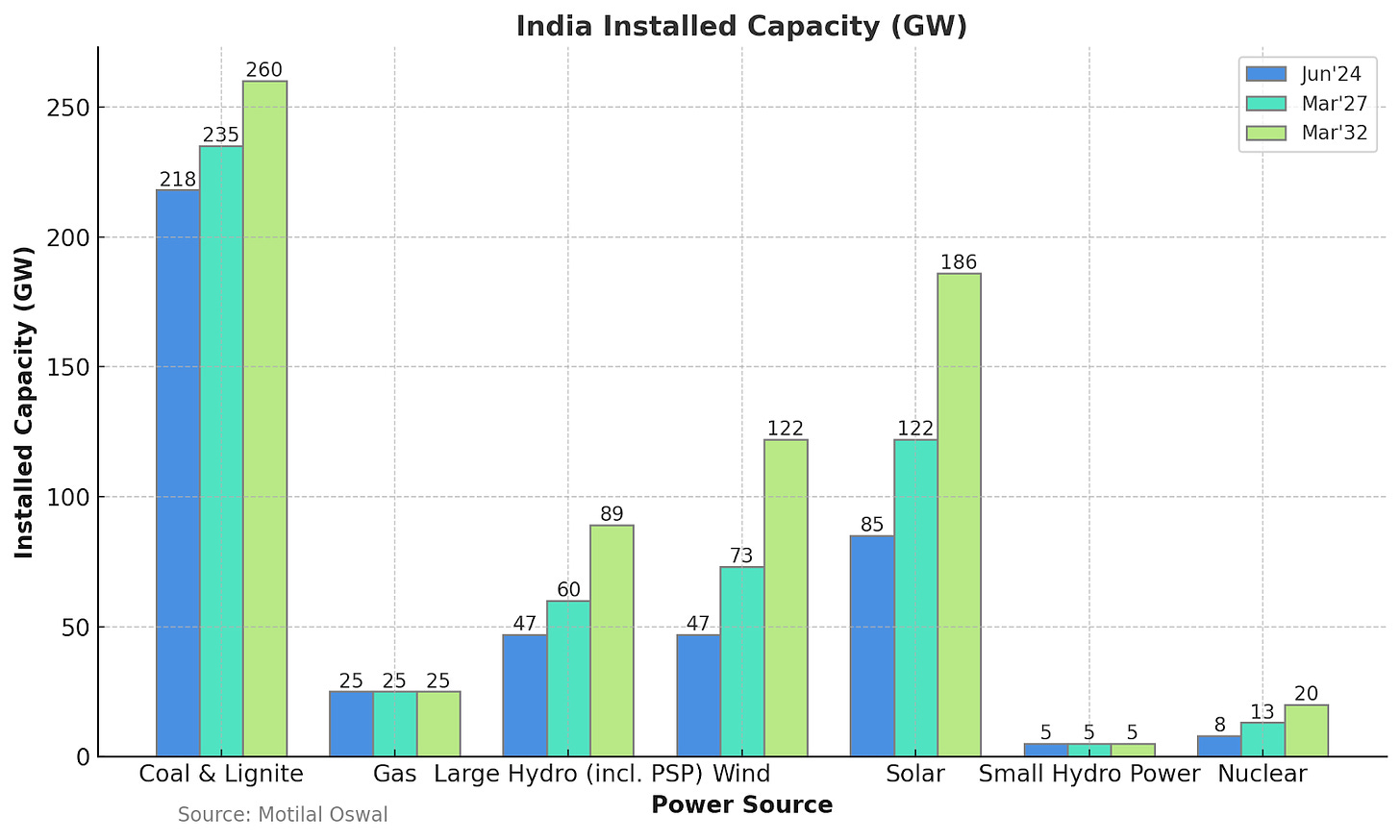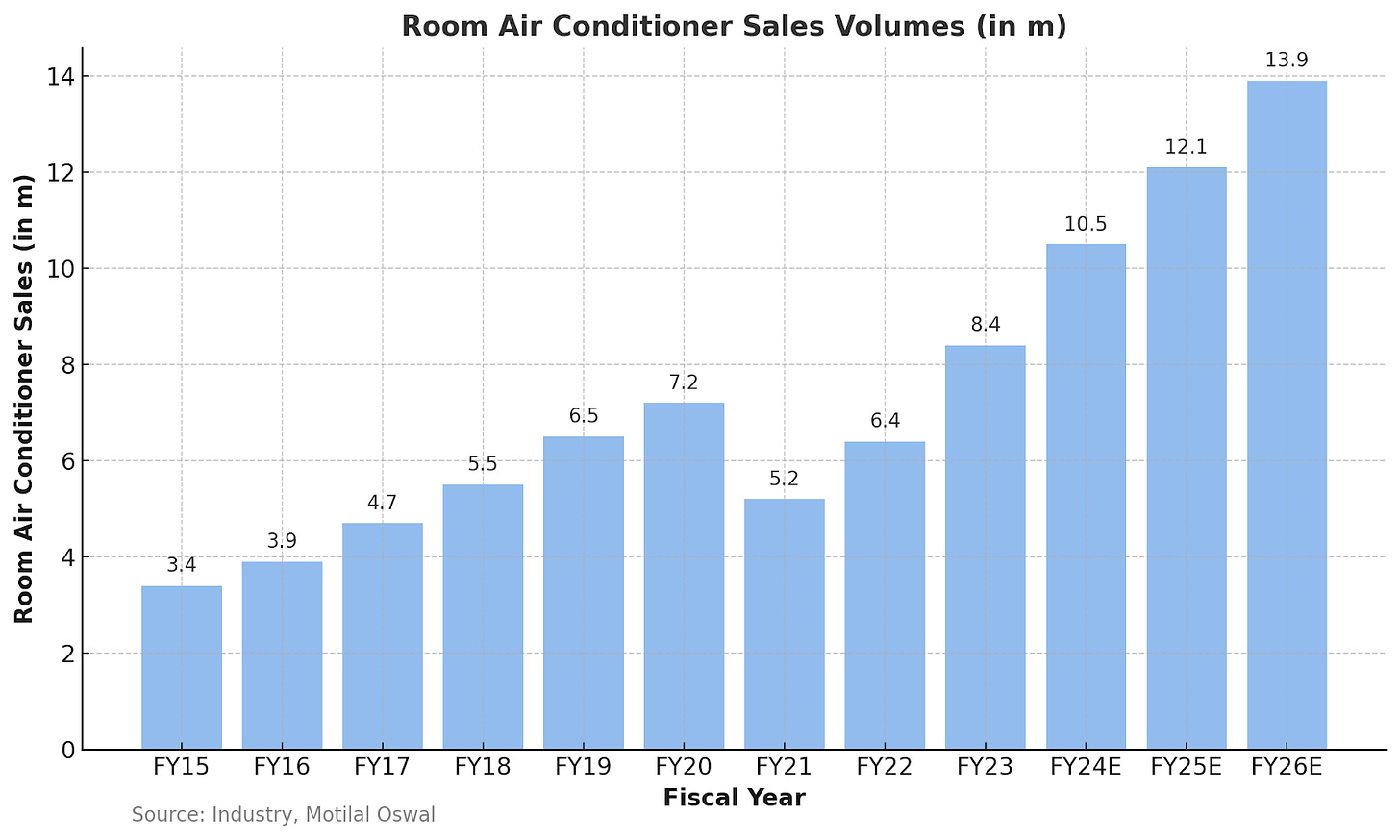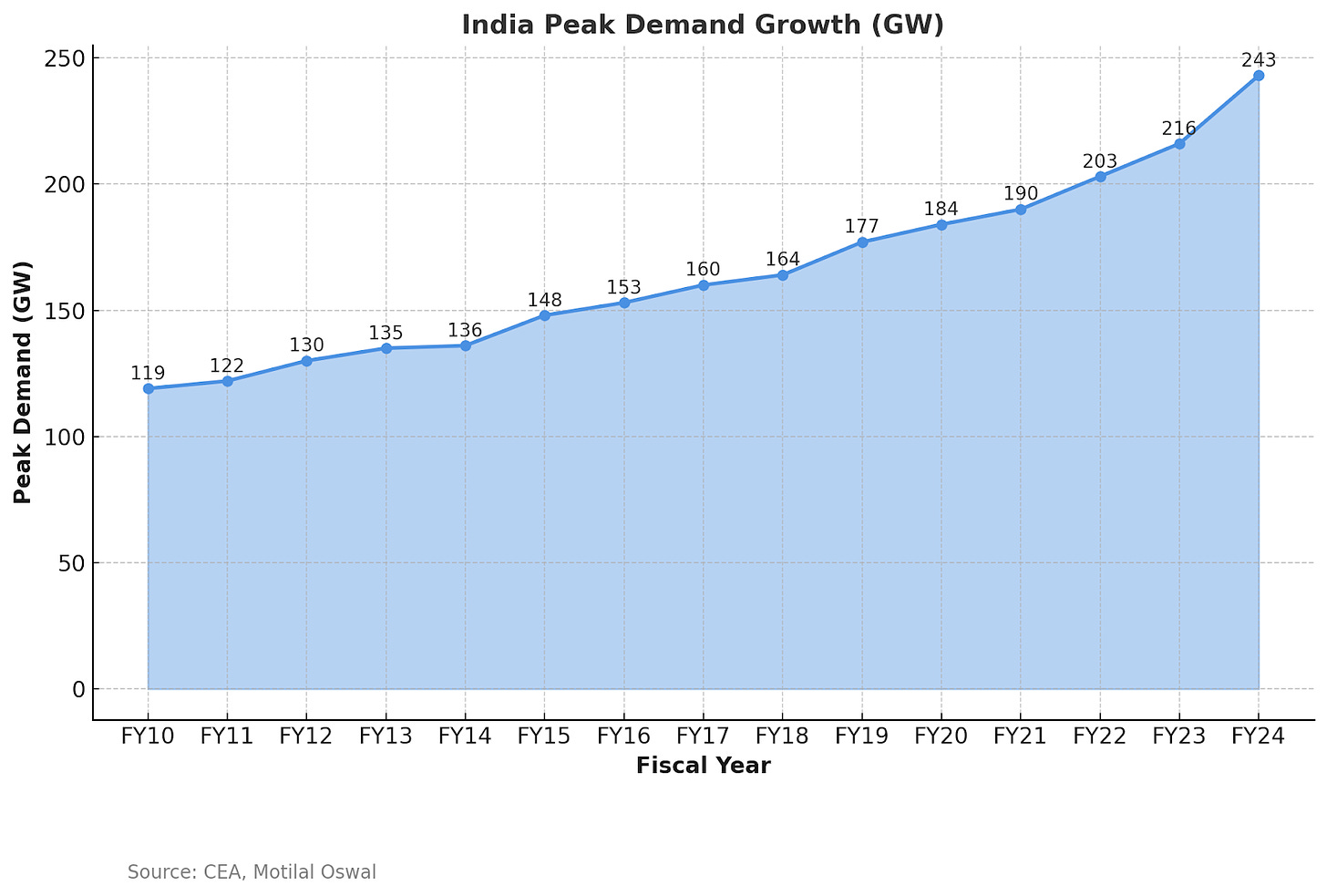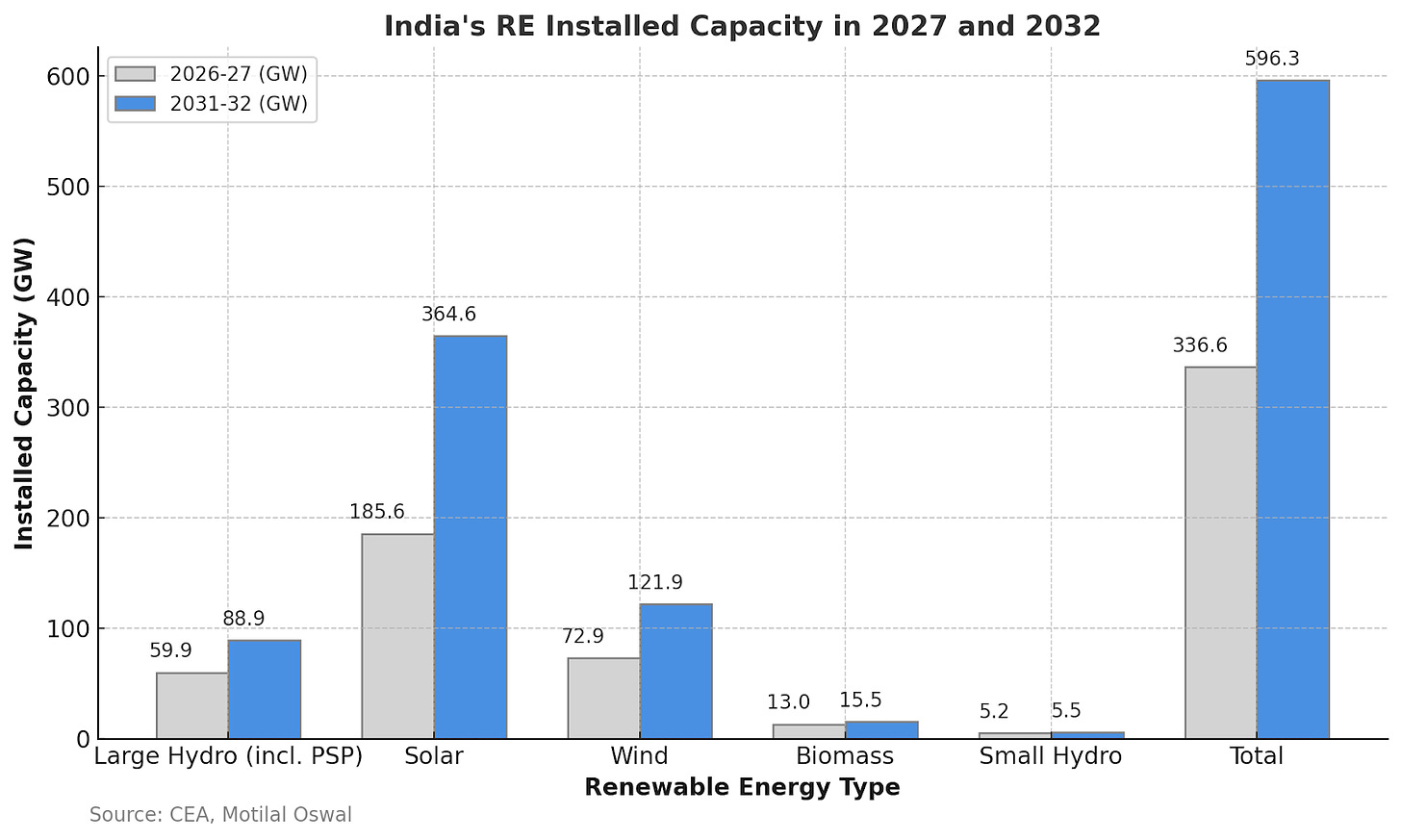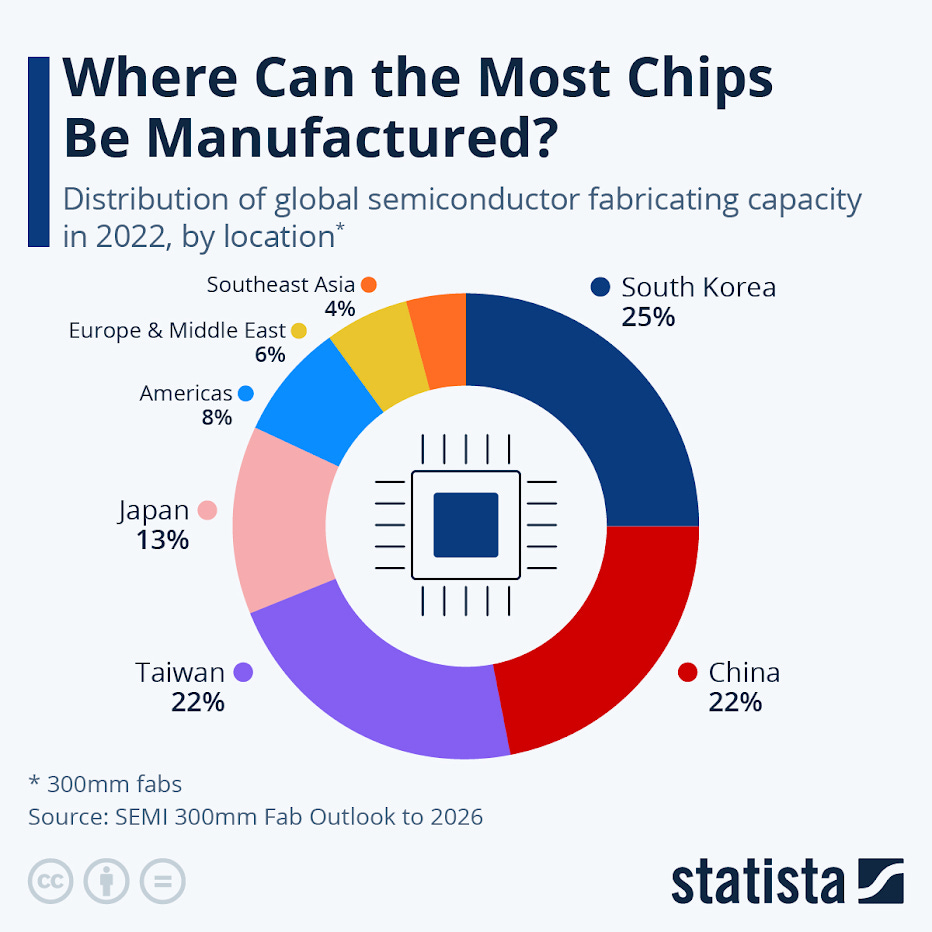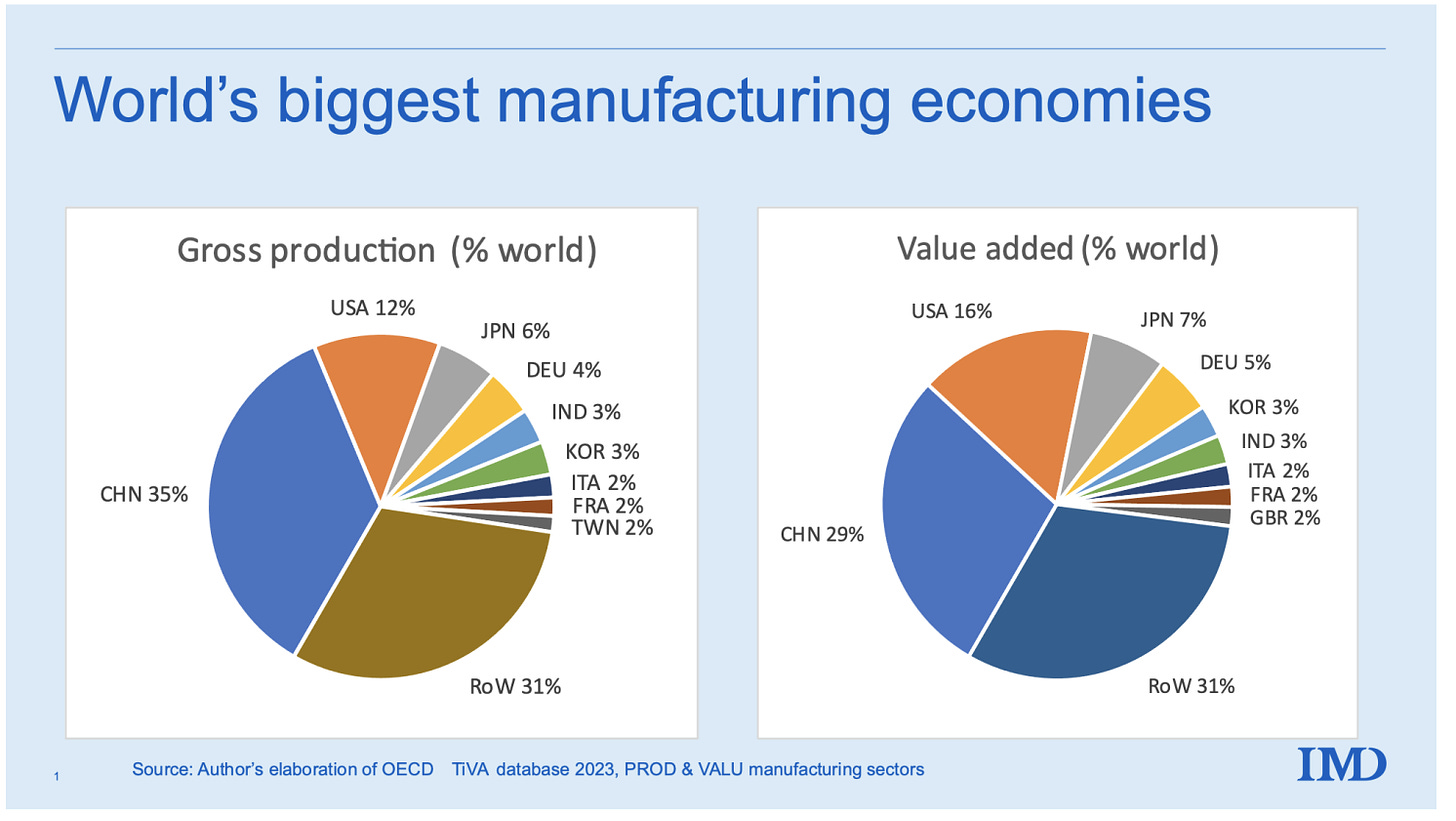Our goal with The Daily Brief is to simplify the biggest stories in the Indian markets and help you understand what they mean. We won’t just tell you what happened, but why and how too. We do this show in both formats: video and audio. This piece curates the stories that we talk about.
You can listen to the podcast on Spotify, Apple Podcasts, or wherever you get your podcasts and video on YouTube.
You can also listen to The Daily Brief in Hindi.
Today on The Daily Brief:
- There’s some intel on Intel
- India’s green transition: A colossal transformation
- Is India really the next China?
There’s some intel on Intel
According to recent reports, Qualcomm, the company known for its mobile chips, has reached out to Intel about a possible takeover. Yep, the same Intel that once dominated the PC chip market worldwide! If this deal goes through, it would be massive. But for now, nothing’s official, and no offers have been made. Still, just the fact that this conversation is happening says a lot about how much Intel has fallen from grace.
So, what’s going on with Intel? How did a company that once ruled the chip world end up like this? Let’s break it down.
Intel has been struggling for a while now, with seven straight quarters of declining sales. In August, Intel’s CEO, Pat Gelsinger, announced 15,000 job cuts. And if that wasn’t bad enough, they even scrapped their dividend.
Intel’s problems come down to bad decisions and missed opportunities. First, they missed the mobile revolution. While the world was going crazy for smartphones, Intel was still stuck on PCs. They even turned down a chance to work on the iPhone with Apple back in the day!
But missing out on mobile wasn’t their only mistake. Gelsinger admitted to two other big blunders:
- Intel canceled a GPU made for AI in 2010. Looking back, that was a costly mistake, especially in today’s AI-driven world.
- Intel got too focused on building their own foundry business, which distracted them from other key opportunities.
Then there’s the whole AI chip thing. While companies like Nvidia were building GPUs that became the backbone of AI computing, Intel stuck to their old CPUs. The result? Intel has been playing catch-up ever since. To give some context, this year, Intel expects to make about $500 million from its AI chips, while Nvidia makes $20 billion every quarter from theirs!
For those unfamiliar, GPUs (Graphics Processing Units) were initially designed to handle video game graphics. But it turns out that the same tech that’s great for processing pixels is also perfect for handling the massive data crunching needed for AI.
Back to Intel—their big issue was trying to do everything in-house instead of going “fabless” like much of the industry. Here’s what that means: Traditionally, chip companies used to design and manufacture their own chips. But in the late '90s and early 2000s, a new model called the fabless model took off. In this setup, companies focus solely on designing chips and let someone else handle manufacturing. It’s cheaper, faster, and lets companies use the latest tech.
Nvidia and Qualcomm are great examples of this model. They design their chips but let foundries like TSMC manufacture them. Intel, on the other hand, stuck to its old ways, handling everything in-house. This was fine until Intel ran into manufacturing issues in the mid-2010s. Unlike fabless companies, they couldn’t just switch to a better manufacturer when things went wrong.
These manufacturing struggles also gave AMD a chance to make a big comeback. Once AMD got a foot in the door, they didn’t let go. Intel also fell behind in the race to make smaller, more efficient chips, lagging behind TSMC and Samsung.
So, is it game over for Intel? Not necessarily. Since taking over as CEO in 2021, Gelsinger has been working hard to turn things around. He’s opening up Intel’s factories to other companies, trying to catch up in AI, and even partnering with ARM, a competitor, because ARM’s designs now make up a big chunk of the chip market.
But turning Intel around is no easy task. With all the trouble they’re in, it’s going to take a lot of time—and even then, there’s no guarantee of success. Since Gelsinger announced his turnaround plan, Intel’s stock has dropped 60%, and for the first time since 1981, Intel is trading below its book value. That’s a huge fall for a company that used to have its stickers on nearly every computer.
If the Qualcomm-Intel deal does happen, it could be the biggest tech acquisition ever! But there are some major hurdles.
- Regulators: Antitrust concerns are a big deal, and merging two giants like Qualcomm and Intel will definitely catch the attention of regulators.
- Money: Intel’s market cap is around $93 billion, which is a lot, even for Qualcomm.
- Politics: Chips are now seen as critical to national security. The U.S. government has been pushing to bring chip manufacturing back to America, so how they’ll react to this deal is anyone’s guess.
India’s green transition: A colossal transformation
India is at an exciting point in its energy journey. Our country has big plans to ramp up power infrastructure over the next decade, and the numbers are huge. According to a report from Motilal Oswal, India needs to more than double its power capacity by 2032, jumping from 442 GW to a massive 900 GW. But it’s not just about adding more power—it’s about building a sustainable, future-ready energy mix.
To make this happen, we’re looking at an investment of around ₹40 lakh crores! Most of this—about 86%—will go into generating and transmitting energy, while the rest will be spent on things like smart meters to make our power grid more efficient. The goal is to shift away from coal and towards renewables like solar and wind, which are expected to make up more than half of India’s energy mix by 2032.
Source: Ember
What’s driving all these changes? It’s not just about where India gets its power—it’s also about how we use it. Currently, coal dominates, but by 2032, its share will drop below 30%, making way for more renewables. And it’s not just power plants making the switch; industries and households are using more energy than ever before. Two sectors set to drive this demand are electric vehicles (EVs) and data centers, which alone could account for a third of India’s power consumption growth by 2035.
Data centers are expected to grow by 30% annually, and EVs, especially in the two-wheeler market, are set to boom. By 2035, 60% of new two-wheelers sold will be electric, and EVs will make up about 17% of India’s total power consumption. Rising incomes also mean more households are buying energy-hungry appliances like air conditioners, which are growing at about 6% per year, pushing power demand even higher.
This surge in power demand is closely tied to India’s growing economy. If India’s GDP continues to grow at around 7% annually, power demand is expected to increase by 7-9% each year over the next decade—similar to the early 2000s in China, where rapid economic growth led to a huge spike in energy use.
India’s shift towards renewables wouldn’t be possible without government support. Policies like the Renewable Purchase Obligation require power companies to buy a portion of their energy from renewables. The Production Linked Incentive (PLI) scheme for solar PV manufacturing is also in place to reduce India’s reliance on imports, with the goal of reaching 500 GW of renewable energy capacity by 2030, up from the current 192 GW.
But producing renewable energy is only part of the challenge. We also need to figure out how to deliver that energy to those who need it. This is where transmission and distribution (T&D) upgrades come in. India will need about ₹4 lakh crores invested in T&D infrastructure to integrate renewables into the grid smoothly. Power Grid Corporation of India, for instance, is looking at a ₹2 lakh crore capex opportunity to upgrade high-voltage transmission systems, which is essential for getting solar and wind energy from remote areas to urban centers.
With this massive transformation underway, some companies are in a great position to benefit. Power Grid Corporation of India is leading the charge in transmission upgrades. JSW Energy is set to capitalize on the renewable boom, planning to more than double its capacity to 20 GW by 2030, mostly in renewables. Tata Power is also making a big shift, aiming for 90% of its core earnings to come from renewables by 2027. NTPC is expanding its renewable portfolio through its subsidiary, NGEL, which is expected to go public in 2025.
Of course, this transition won’t be without challenges. Transmission bottlenecks, like those in Rajasthan, are already causing delays for some projects. Rising competition in the solar and wind sectors could squeeze margins, and fluctuations in commodity prices add another layer of difficulty.
Still, with strong government backing, ambitious goals, and companies ready to take the lead, India’s shift towards green energy is definitely an opportunity worth watching.
Is India really the next China?
Recently, Jamie Dimon, CEO of JP Morgan, spoke to CNBC TV18 about the big semiconductor deal between India and the U.S., India’s role in the global supply chain, and attracting foreign investments. Now, you might be wondering why we should care about what he says. Well, Jamie Dimon isn’t just anybody—he’s the head of the world’s 5th largest bank, so when he speaks, it’s worth paying attention. Let’s break down what he said and why it matters to us.
Dimon first talked about the semiconductor deal between the U.S. and India. Semiconductors aren’t just for our phones anymore—they’re crucial for everything from military hardware to telecom networks. Right now, China dominates the semiconductor market, which puts countries like the U.S. in a tough spot.
With geopolitical tensions on the rise—whether it’s trade, tech, or national security—the U.S. is looking to diversify its supply chain, and that’s where India comes in. The new semiconductor deal is a big step towards reducing dependence on China. As Dimon put it, “The world can’t rely on just one country for something as critical as semiconductors.”
The U.S. and India are joining forces to build a semiconductor fab (a chip-making factory) in India in partnership with Bharat Semi, 3rdiTech, and even the U.S. Space Force. These chips won’t just be for gadgets; they’ll be used in military and telecom equipment, ensuring both countries have a secure supply of these essential technologies. For India, this deal could be a game-changer, positioning the country as a reliable alternative to China. This is a crucial part of India’s goal to become a major player in global manufacturing, especially as more countries adopt the “China +1” strategy, looking beyond China for production.
Source: CEPR
Dimon also touched on industrial policy, especially in sectors critical for national security, like semiconductors. While protecting key industries makes sense, Dimon warned that too much regulation can choke innovation. In simpler terms, it’s good to protect important sectors, but going overboard with rules can slow down progress. If India manages this balance well, the semiconductor deal could set the tone for how we grow while keeping national security in mind.
He also discussed the global supply chain realignment. With big companies like Apple moving production away from China, India is positioning itself as a serious player in this space. But this transition won’t happen overnight, especially in complex industries like semiconductors—it could take 10 to 15 years to fully shift away from China. Still, India has momentum. Dimon emphasized the need for continued investment in infrastructure and maintaining a business-friendly environment. The semiconductor fab is just one piece of the puzzle, and if India keeps this pace, there’s a huge opportunity to become a key player in global supply chains.
Finally, Dimon touched on one of India’s biggest challenges: attracting foreign direct investment (FDI). Despite the progress, FDI into India dropped by 43% in 2023. It’s not just about economic conditions; investors have concerns about policy changes and unpredictable regulations. Dimon pointed out that while India’s business environment has improved, investors still need more confidence to invest. Plus, India’s preference for homegrown companies can make foreign investors nervous. It’s not just about having good policies; it’s about creating a stable and predictable business environment.
Dimon’s bottom line? India has huge potential, but it needs to build trust with international investors. The goal should be to make doing business in India as smooth and transparent as possible.
Tidbits:
- SpiceJet has raised ₹3,000 crores through a Qualified Institutional Placement (QIP) and an additional ₹736 crores from earlier funding to stabilize operations after losing market share. This funding will help it regain ground in India’s competitive aviation industry.
- Mobikwik and Waaree Energies have received SEBI approval to launch IPOs, aiming to raise ₹700 crores and ₹3,000 crores, respectively. Mobikwik plans to boost its growth in fintech, while Waaree Energies focuses on expanding its renewable energy business.
- India’s latest oil and gas bid round saw major players like ONGC and Vedanta participate across 28 blocks, as the government aims to boost domestic energy production and cut down on the $222 billion oil import bill.
- India’s latest oil and gas bid round saw major players like ONGC and Vedanta participate across 28 blocks, as the government aims to boost domestic energy production and cut down on the $222 billion oil import bill.
- Byju’s lost control of its U.S. subsidiary, Byju’s Alpha Inc., after a Delaware court upheld a $1.2 billion loan default, complicating Byju’s financial troubles and global expansion efforts.
- JSW Group is considering moving its ₹40,000-crore EV and battery project from Odisha to Maharashtra due to changes in state leadership. Potential new locations include Aurangabad and Nagpur.
Thank you for reading. Do share this with your friends and make them as smart as you are ![]()
If you have any feedback, do let us know in the comments
